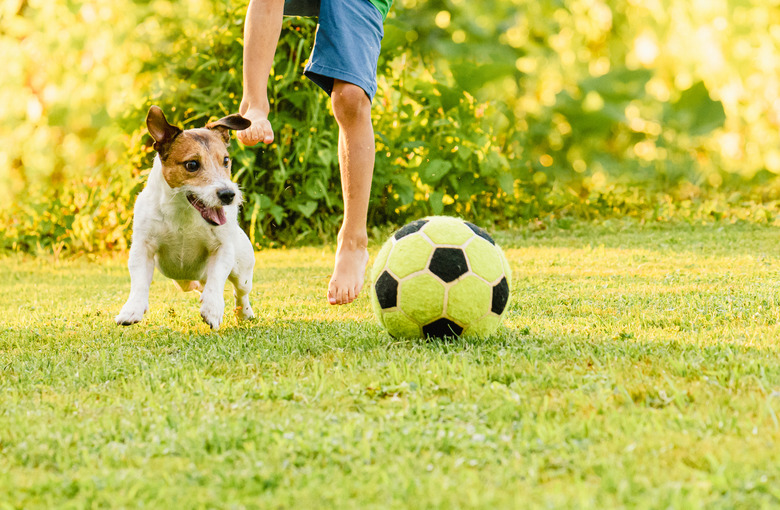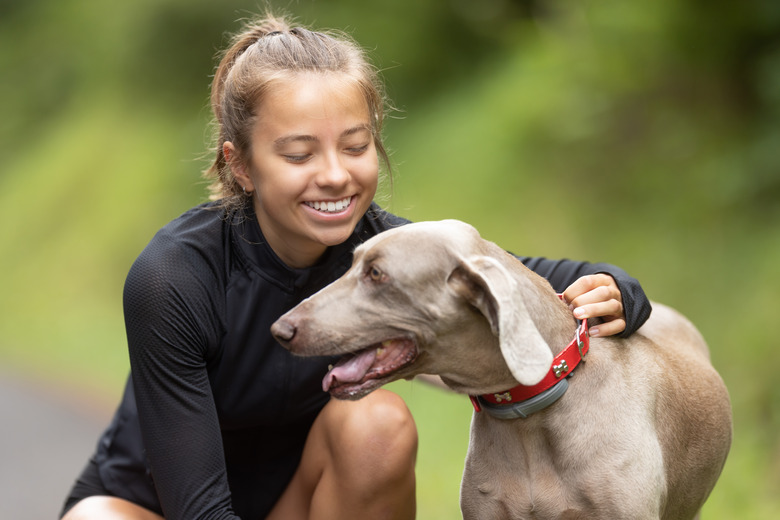How To Treat A Boil On A Dog
Medically known as a furuncle, a boil on your dog may require veterinary attention. A furuncle is an infected hair follicle. They will feel like a lump of fluid that is pressing against your dog's skin. This fluid is pus, and it indicates a localized bacterial infection that can be very painful for your dog. Monitor your dog's temperature and pain level to help your veterinarian make a treatment decision. A pet with multiple boils is more prone to developing a fever.
If you discover a lump on your dog's body, consult with your veterinarian. Even if the lump isn't a boil, they may be prone to various tumors or may have developed warts. Your veterinarian will be able to run the necessary tests to better understand the situation.
Your dog’s lump may be a cyst
Your dog's lump may be a cyst
What you think is a boil may actually be a sebaceous cyst. It looks like a pimple, and as in humans, it occurs when oil glands get blocked. It's tempting to pop it but don't, as this can create a skin infection. It may disappear without any intervention from you, but if it becomes infected, it may abscess. You'll then feel the lumpy pocket of pus that indicates a boil. You can treat a cyst to help prevent it from abscessing. Applying similar measures to a boil can keep your dog comfortable until your veterinarian can see them.
Some dogs are prone to furuncles on their paws
Some dogs are prone to furuncles
on their paws
When a dog develops furuncles between their toes, they are called interdigital furuncles. These bacterial infections can occur when the shorter hairs on some breeds are forced backward into the hair follicles. Other common causes include a foreign material embedded in the skin in the area, canine atopic dermatitis, or demodectic mange (demodicosis).
There are several dog breeds that are more likely to experience interdigital furuncles. Shar Peis, Labs, and bulldogs are all prone to developing demodicosis, atopic dermatitis, and environmental allergies that result in skin problems. These skin conditions can lead to the development of furuncles. These breeds also have short, bristle-like hair that is known to cause the damage necessary to cause a bacterial infection. If you spot boils on your dog's toes, contact your veterinarian.
Reduce the risk of cysts and boils in your dog
Reduce the risk of cysts
and boils in your dog
While there is no guaranteed way to prevent cysts and boils from developing, there are steps that you can take to reduce the risk. Pet owners should take steps to protect your dog from fleas and insect bites when spending time outdoors. If you are going to be in an area where you are at risk of biting insects, consider using a dog-friendly bug repellent. Brush and groom your dog regularly to prevent oil buildup that blocks glands and hair follicles. Talk to your veterinarian about adding a fatty acid to your dog's diet to help healthy skin oil production.
Provide your dog relief with a warm compress
Provide your dog relief with a warm
compress
Furuncles can be uncomfortable and quite painful for your dog. One way to temporarily relieve your dog's pain is to apply a warm compress to the boil. Soak a washcloth in 1 quart of water with 1 teaspoon of table salt or 1/4 cup of Epsom salts. Press the warm cloth against the boil for 15 minutes at least three times daily — more if the cyst or boil starts to drain.
Contact your veterinarian if:
- A cyst
or boil erupts so they can determine if antibiotics are necessary to
prevent or treat an infection - You
detect a splinter or other foreign object - The
boil becomes hot and red - Your
dog runs a fever
Your vet may lance the boil with a fine needle and prescribe a course of antibiotics. You will likely be instructed to clean the area with an anti-bacterial/anti-fungal shampoo, like chlorhexidine with miconazole. Additional treatment may be needed to address the underlying cause of any boils or abscesses in dogs.
If your dog is licking or chewing at the boil, this can cause further problems, including hair loss or a more serious infection. Dog owners may wish to use an Elizabethan collar to keep dogs from reaching the lump.
Dog lumps may also be fatty tumors
Dog lumps may also be fatty tumors
If your dog is older, you may be confusing benign and naturally occurring fatty tumors with boils. These fatty tumors, called lipomas, can often be identified based on their size. They can grow to be quite large, while boils are often quite small, usually staying under 2 centimeters. Lipomas along with warts typically need no medical intervention unless they make your dog uncomfortable. Some breeds, such as schnauzers, beagles, Labradors, and some terriers and boxers, are prone to mast cell tumors that can be serious. Your veterinarian can determine the seriousness of any lump you detect on your dog.
The bottom line
The bottom line
Boils, or furuncles, are infected hair follicles filled with pus and dead skin cells. They can be uncomfortable or painful for your dog. Some breeds are at a higher risk of developing boils. If you notice a lump on your dog, contact your veterinarian. They will be able to determine if the lump is a furuncle, cyst, or fatty tumor known as a lipoma. Your veterinarian may lance the boil to drain the pus and prescribe antibiotics to treat the infection.


